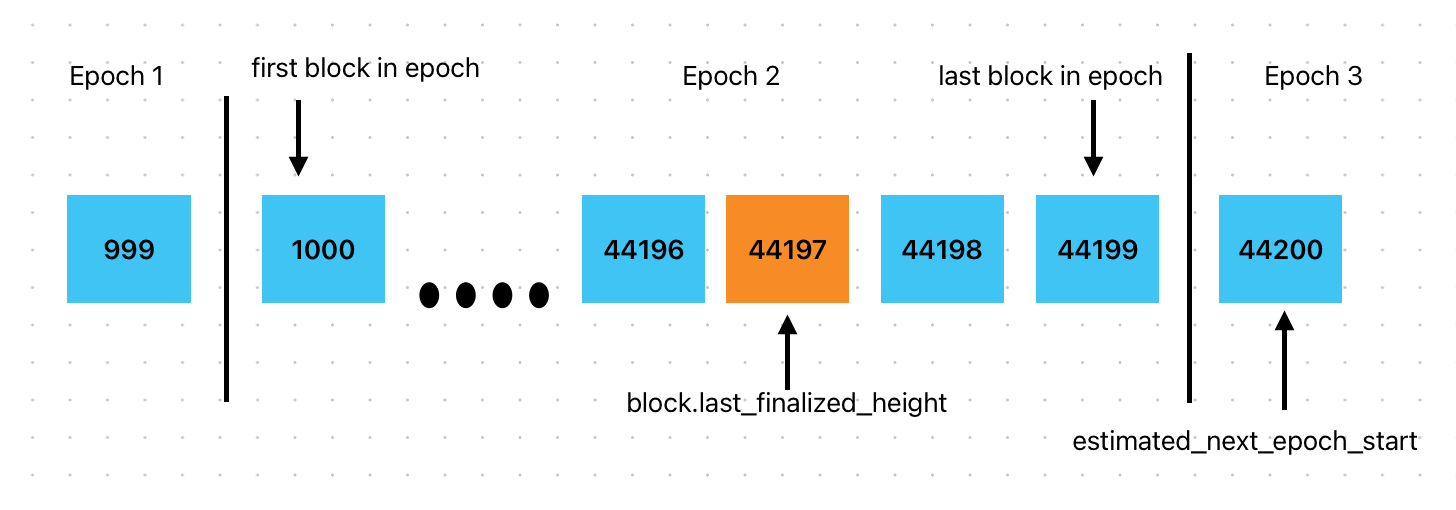Epoch
All blocks are split into epochs. Within one epoch, the set of validators is fixed, and validator rotation happens at epoch boundaries.
Genesis block is in its own epoch. After that, a block is either in its parent's epoch or starts a new epoch if it meets certain conditions.
Within one epoch, validator assignment is based on block height: each height has a block producer assigned to it, and each height and shard have a chunk producer.
End of an epoch
Let estimated_next_epoch_start = first_block_in_epoch.height + epoch_length
A block is defined to be the last block in its epoch if it's the genesis block or if the following condition is met:
block.last_finalized_height + 3 >= estimated_next_epoch_start
epoch_length is defined in genesis_config and has a value of 43200 height delta on mainnet (12 hours at 1 block per second).
Since every final block must have two more blocks on top of it, it means that the last block in an epoch will have a height of at least block.last_finalized_height + 2, so for the last block it holds that block.height + 1 >= estimated_next_epoch_start. Its height will be at least estimated_next_epoch_start - 1.
Note that an epoch only ends when there is a final block above a certain height. If there are no final blocks, the epoch will be stretched until the required final block appears. An epoch can potentially be longer than epoch_length.

EpochHeight
Epochs on one chain can be identified by height, which is defined the following way:
- Special epoch that contains genesis block only: undefined
- Epoch starting from the block that's after genesis:
0(NOTE: in current implementation it's1due to a bug, so there are two epochs with height1) - Following epochs: height of the parent epoch plus one
Epoch id
Every block stores the id of its epoch - epoch_id.
Epoch id is defined as
- For special genesis block epoch it's
0 - For epoch with height
0it's0(NOTE: the first two epochs use the same epoch id) - For epoch with height
1it's the hash of genesis block - For epoch with height
T+2it's the hash of the last block in epochT
Epoch end
- After processing the last block of epoch
T,EpochManageraggregates information from block of the epoch, and computes validator set for epochT+2. This process is described in EpochManager. - After that, the validator set rotates to epoch
T+1, and the next block is produced by the validator from the new set - Applying the first block of epoch
T+1, in addition to a normal transition, also applies the per-epoch state transitions: validator rewards, stake unlocks and slashing.